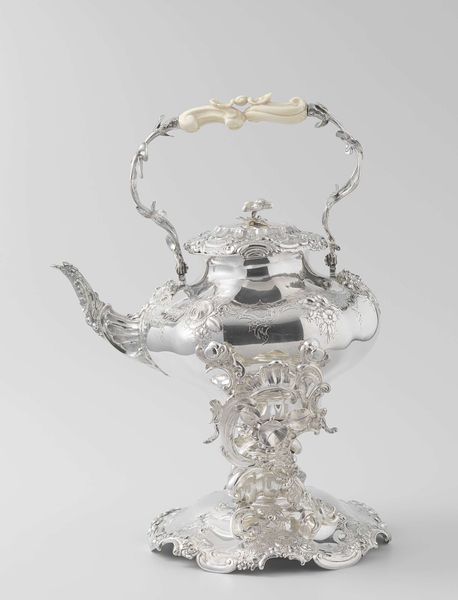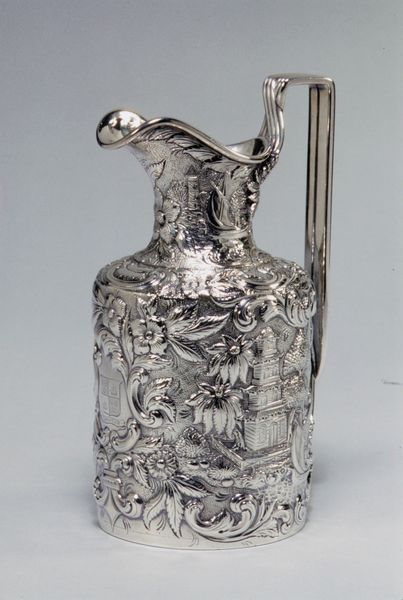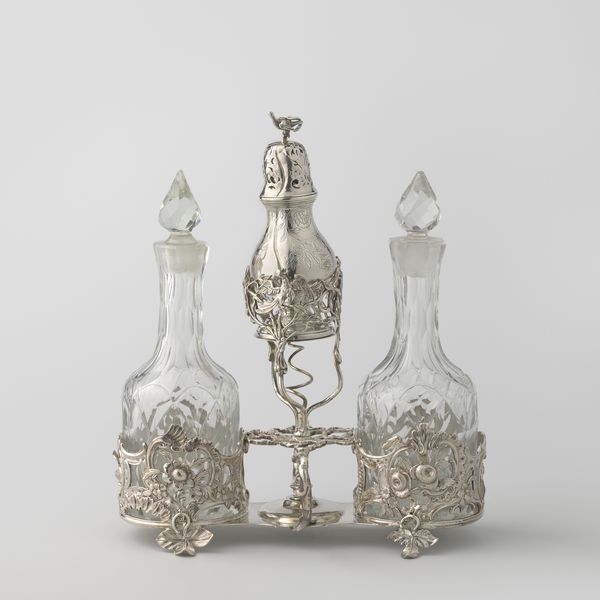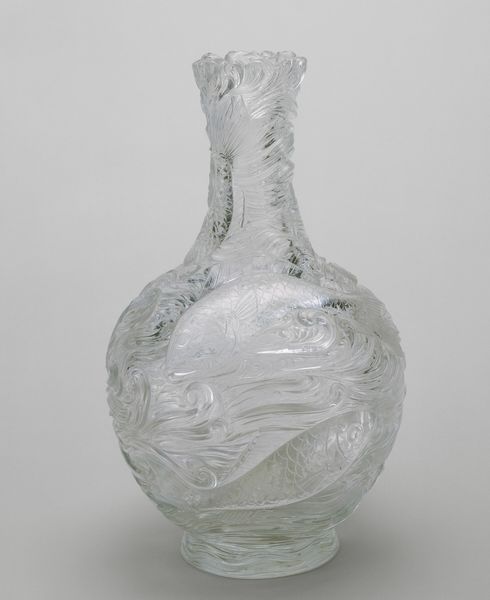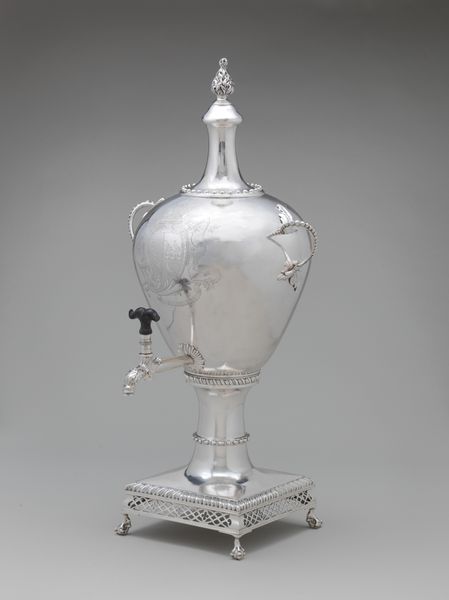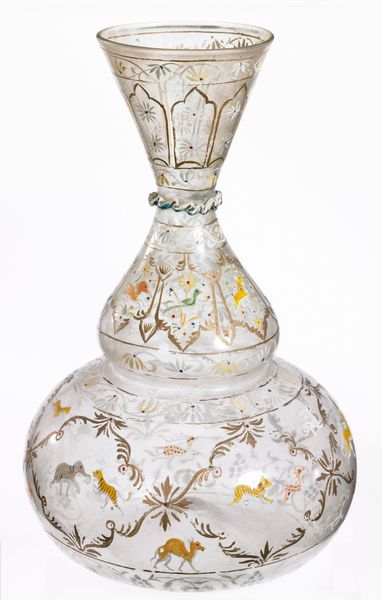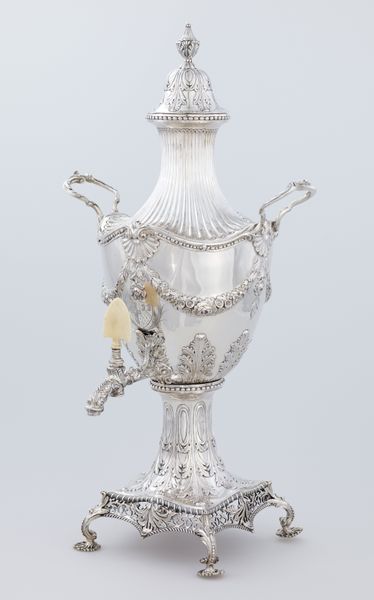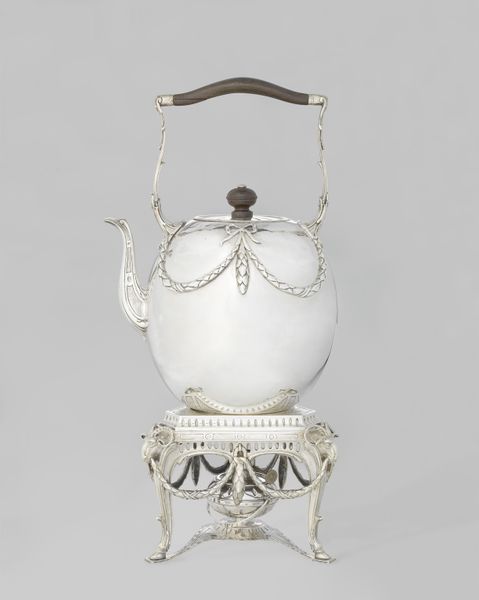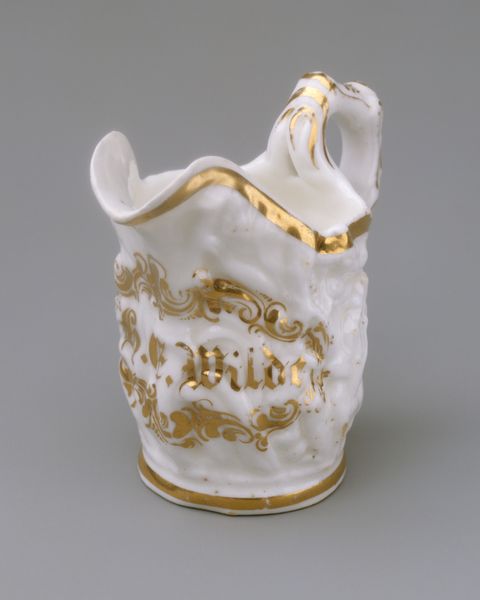
Dimensions: height 59.1 cm, width 18.5 cm, depth 22.1 cm, weight 4185 gr
Copyright: Rijks Museum: Open Domain
Editor: This stunning object is a silver tea urn and stand made by Charles-Nicolas Odiot, around 1838 to 1845. Its decorative floral elements immediately caught my eye. How would you interpret this piece? Curator: I see the echoes of ancient rites rendered in gleaming silver. Consider the tea urn’s elevated position – lifted high by the stand, almost an altar for a liquid offering. What does the symbolism of tea suggest to you, within its cultural memory? Editor: Well, tea, at least to me, means warmth, hospitality, maybe refinement, but I am not so sure if I can trace a larger pattern there? Curator: Indeed. The intricate floral motifs climbing across its surface are not merely decoration, but potent symbols of growth, abundance, and renewal. This is further emphasized by its Baroque flamboyance, suggesting a return to opulence, perhaps reflecting a desire for stability and elegance in post-revolutionary France. Does it speak to a specific cultural aspiration, do you think? Editor: It’s interesting that you mention the aspirations of a post-revolutionary society – almost as if they’re trying to reclaim some idealized past. I do feel that its intricate silver designs contrast with the simple comfort associated with a cup of tea, which could mean an emphasis on visual splendor? Curator: Precisely. It represents much more than simple utility, reflecting an ambition to imbue even everyday acts with artistic flair. It's an intriguing demonstration of how the memory of power and prestige manifests through domestic objects, isn’t it? Editor: Absolutely. I had thought of tea as a fairly neutral item, yet you’ve framed it as something far richer, charged with aspirations and history. Curator: And what an engaging thing for a student to grasp – that even utilitarian objects are embedded with psychological, cultural, and social meanings.
Comments
No comments
Be the first to comment and join the conversation on the ultimate creative platform.
